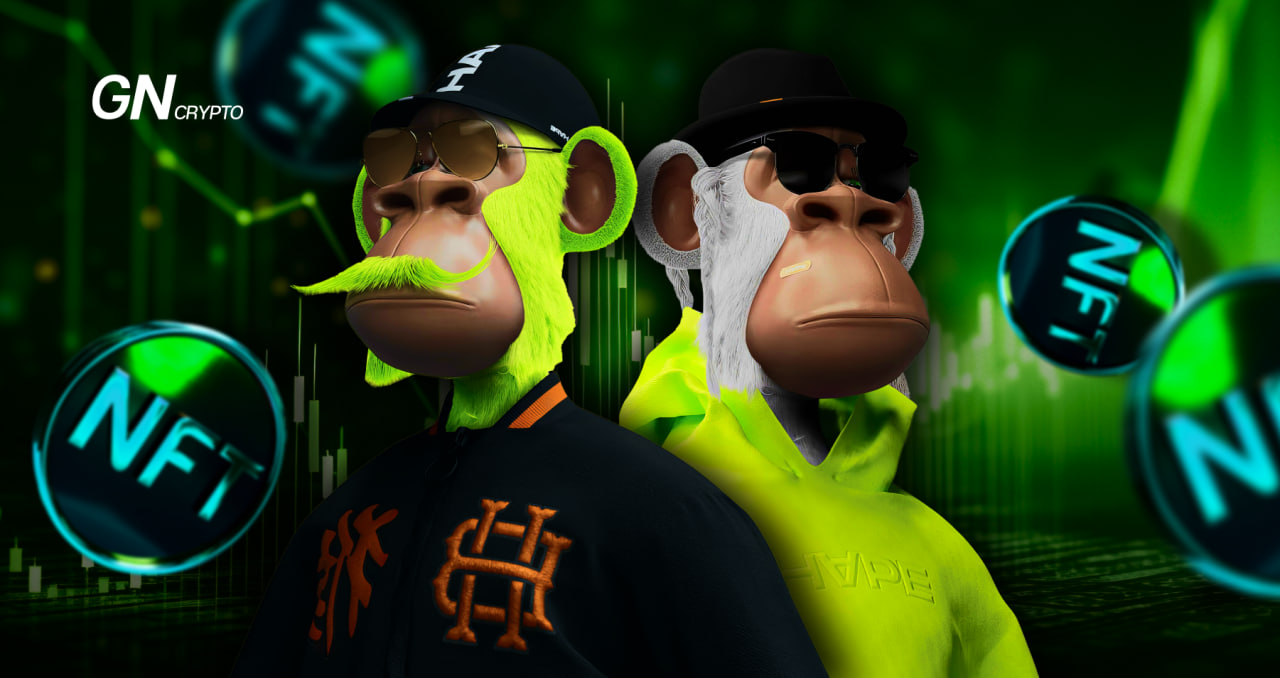The Current State of NFTs: Overview and Statistics

The heyday of the NFT market was in 2021, but since then, the industry has faced its most significant downturn due to a lack of liquidity and new users.
Over the last four years, NFTs have found applications in art, gaming, music, business models, real estate, and even real-world assets (RWAs). However, data from 2023 reveals that interest in NFTs has hit a three-year low.
NFT Statistics
The total market capitalization of NFT projects is valued at $12.8 billion, according to Coingecko, with a daily trade volume averaging $2.8 billion. It's important to mention that these figures include the Internet Computer project, which isn't directly a part of the NFT sector:
Market indicators of leading NFT projects. Source: coingecko.com
CoinMarketCap counts blockchains like Internet Computer, Tezos, Conflux, and Stacks, along with various decentralized applications, within the NFT sector, thus showing a market capitalization exceeding $16 billion:
Extended list of NFT projects. Source: coinmarketcap.com
Cryptorank provides the most precise figures. On this platform, the NFT market cap is $11.12 billion, with daily trading volumes close to $1.3 billion.
Market data of NFT projects as per Cryptorank. Source: Cryptorank.io
Most projects show positive growth over a month, likely influenced by the BTC bullish trend. However, a year-over-year review reveals that 95% of the tokens are trending downward, with the market's overall decline hitting 92%.
Exceptions to this trend include a few projects like GameCredits, Muse DAO, and Origin Protocol.
NFT volatility. Source: Cryptorank.io
When it comes to the public's interest in the NFT sphere, the analytical site DeFiLlama provides a revealing snapshot. Trading volumes for non-fungible tokens on marketplaces have hit a three-year low, averaging just 5050 ETH per day.
Similarly, the count of active users does not surpass 10,000 people in a day across all platforms combined.
NFT trading volumes and trader counts across various marketplaces. Source: defillama.com
In the realm of trading platforms, Blur currently takes the lead, commanding a 45% market share, with its daily trading volume exceeding 3000 ETH. Following are OpenSea and Blur Aggregator, with Cryptopunks and X2Y2 completing the list of leaders.
Top NFT marketplaces. Source: defillama.com
Remaining at the forefront of the most frequently traded NFT collections are Bored Ape Yacht Club, DeGods, Cryptopunks, Mutant Ape Yacht Club, Pudgy Penguins, Winds of Yawanawa, and Azuki.
Most popular and valuable NFT collections. Source: defillama.com
NFT Project Token Sales
Exploring the emergence of new entries in the NFT domain is quite fascinating. Based on data from Cryptorank, over the past five months, there have been 32 NFT-related projects that have launched into the market through the IDO/ICO/INO. Almost all of these debuted projects have floundered post-listing and proved to be loss-making ventures for investors. Only a couple of projects, namely Shiba Saga (SHIA) and Norma in Metaland (Gram), have been exceptions.
Profitability Statistics for NFT Sales. Source: Cryptorank.io
The Current State of Ordinals
Ordinals are a specific form of tokens, often dubbed “Bitcoin NFTs.” On our website, you can find a comprehensive article detailing how these assets operate and the ways to trade them.
Despite high hopes from crypto experts, 2023 hasn't been the best year for Ordinals. The total market cap of Bitcoin-based tokens is now under $250 million, as per CoinGecko:
BRC-20 market cap. Source: coingecko.com
The most notable Bitcoin Ordinals collections are Twelvefold, Bitcoin Frogs, bitmap, OCM Dimensions 300, BTC Machines, Mash Beatles, and others. Combined, the worth of all Ordinals currently being traded on exchanges doesn't exceed 1200 BTC, which amounts to roughly $41 million.
Dynamics and market data of Ordinals collections. Source: coingecko.com
Ordinals have also played a role in the downturn of the NFT market. The introduction of BRC-20 tokens has resulted in liquidity migrating more towards the Bitcoin blockchain, which in turn has significantly reduced the trading volumes for “traditional” NFTs. Additionally, the audience has become polarized into two distinct groups, leading to a crisis in trading volumes.
Non-Fungible Tokens: Unfulfilled Promise
The inception of NFT technology aimed to buttress digital content and copyright. However, the industry has devolved into a market for superfluous images, witnessing a collapse in value due to a lack of demand and practical applications.
The primary flaws plaguing the NFT sector are:
- A clear absence of real-world utility;
- An economic model akin to a pyramid scheme, where the price of NFTs is propped up by continuous new purchases and is prone to collapse amid a transparent lack of demand;
- A significant presence of scams and fraudulent schemes;
- Sluggish advancement in the DeFi sector, which could otherwise provide mechanisms for NFT utility;
- Dispersion across multiple blockchains and platforms, lacking a unified marketplace.
An overly simplistic process for creating NFTs also stands out as a flaw. While this may promote industry growth, the fact that anyone can create non-fungible tokens at minimal cost makes users more vigilant in scrutinizing specific collections and reticent to engage in trade.
NFT Prospects in a Bull Market
In the event of a bullish market turn, certain segments of the NFT industry might see an uplift. Projects likely to experience a positive trend could include:
- Assets linked to the real-world asset (RWA) sector, like NFTs connected with tangible assets, precious metals, real estate, etc.;
- NFTs that find relevance and use in real-life applications;
- Emerging collections and tokens associated with current memes and events capturing public attention;
- Collections on nascent blockchains, potentially benefiting from retroactive drops.
For established projects, growth trajectories will align with the overarching market conditions. Nonetheless, such assets are anticipated to be the last to draw the attention of cryptocurrency enthusiasts.
The content on The Coinomist is for informational purposes only and should not be interpreted as financial advice. While we strive to provide accurate and up-to-date information, we do not guarantee the accuracy, completeness, or reliability of any content. Neither we accept liability for any errors or omissions in the information provided or for any financial losses incurred as a result of relying on this information. Actions based on this content are at your own risk. Always do your own research and consult a professional. See our Terms, Privacy Policy, and Disclaimers for more details.



































